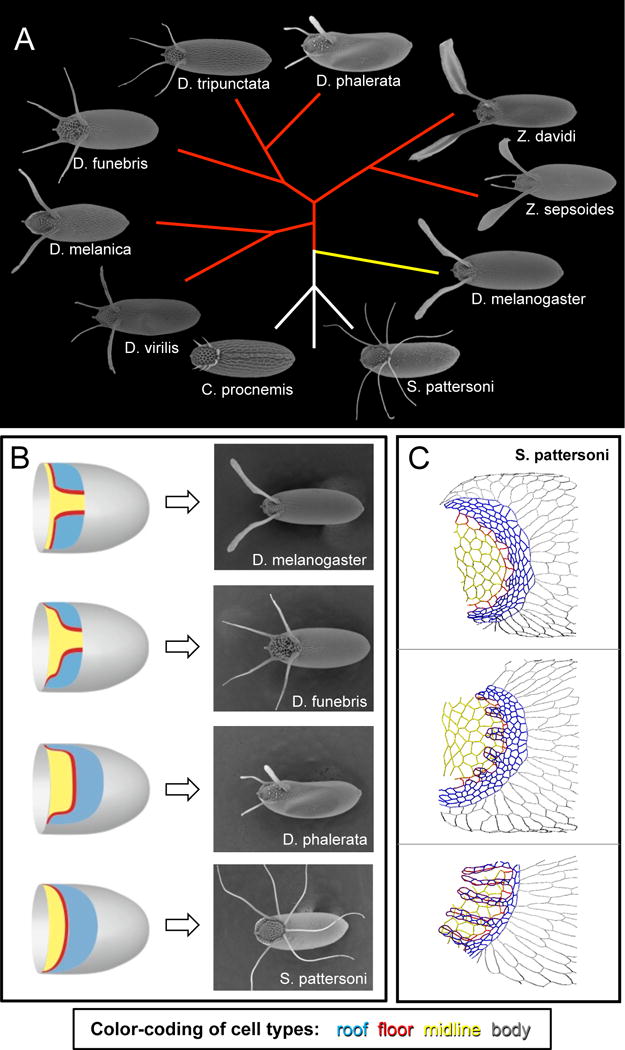Figure 4.

The eggshells of different Drosophilid species provide a rich system for testing models of patterning, morphogenesis, and adaptation. A) Eggshells of species from the genera Drosophila, Scaptodrosophila, Chymomyza, and Zaprionus. The eggshell appendages of various species can differ in both number and shape. This phylogenetic tree is based on (van der Linde et al., 2010) and shows inferred evolutionary relationships among the species, but it does not reflect evolutionary distances. Sizes of eggshells are not to scale. Yellow branch indicates the Sophophora subgenus. Red branches indicate species whose ancestry groups them with members of the Drosophila subgenus. B) The number of appendage primodia in a species (schematized on the left, with same color-coding as Figure 1) does not generally predict the number of eggshell appendages formed (right). See main text for further information. C) The tracings in these panels show apical outlines of S. pattersoni follicle cells; samples are developmentally ordered from top to bottom. In this species, a single appendage primordium is transformed into multiple dorsal appendages, not by the formation of new floor-floor boundaries, but rather by changes in floor-cell shape. Dorsal view. Color-coding as in Figure 1: blue is roof, red is floor, yellow is midline (operculum), and gray is body. Parts of figures B-C are adapted from (Osterfield et al., 2015)
